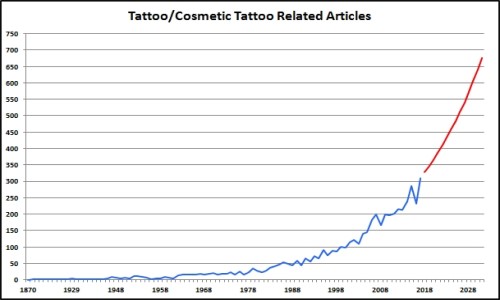Cart is empty
Science Library
15/11/2022

Here you will finds links to recent and or significant publications within the scientific and medical literature with relevance to Cosmetic Tattooing, MicroPigmentation and Medical Tattooing, our information pages provide you with an overview with a direct link to the publisher, the articles themselves are recommended reading.
Each article has been given an "Industry Alert"
rating to assist Cosmetic & Medical Tattooists to identify the significance of
the article to their line of work "Medium or High" ratings indicate that the
articles have a medium or high relevance to safety due to the nature of the
report.
Informative - General industry awareness.
Medium - Industry wide monitoring is recommended.
High - Industry alert, report has major implications related to health and safety.
Groundbreaking Research - providing a significant advancement in industry knowledge base.
Complete regrowth of hair following scalp tattooing in a patient with alopecia universalis
31/01/2023

▼ Continue Reading ▼
Chaotic Tattoo Ink Market and No Improved Customer Safety after New EU Regulation
30/11/2022

▼ Continue Reading ▼
Distribution of nickel and chromium containing particles from tattoo needle wear in humans and its possible impact on allergic reactions
27/08/2019

▼ Continue Reading ▼
A special case of medicine in disguise: Tattoo inks containing anaesthetics
19/03/2019

▼ Continue Reading ▼
Outbreak of Tattoo-Associated Nontuberculous Mycobacterial Skin Infections
21/11/2018

▼ Continue Reading ▼
Atypical Intraepidermal Melanocytic Proliferation Masked by a Tattoo: Implications for Tattoo Artist
20/09/2018

▼ Continue Reading ▼
Inadvertent corneal pigmentation following cosmetic blepharopigmentation
16/09/2018

▼ Continue Reading ▼
Chemical conjunctivitis and diffuse lamellar keratitis after removal of eyelash extensions
26/08/2018

▼ Continue Reading ▼





























